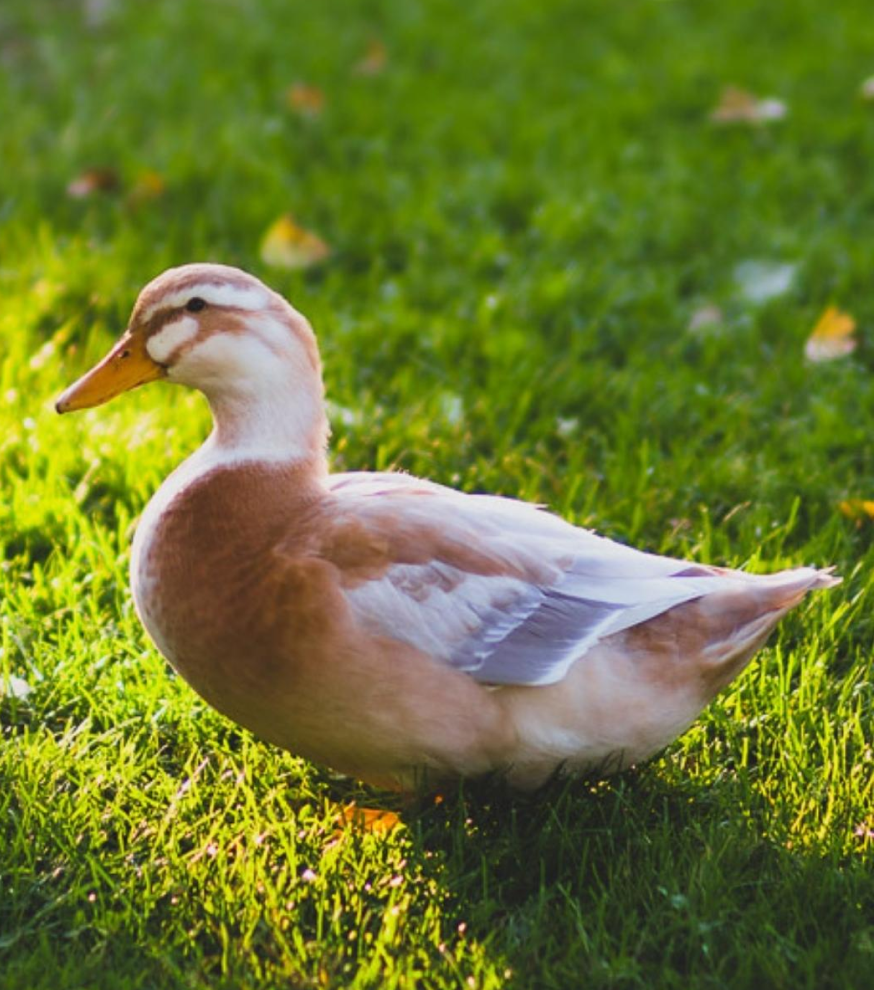
The Saxony duck is a remarkable breed known for its dual-purpose capabilities, particularly in both meat and egg production. Developed in Germany, the Saxony duck combines beauty and functionality, making it a favorite among poultry enthusiasts and backyard farmers. With its unique plumage and friendly disposition, it has gained popularity in various regions.
- Saxony ducks are medium to large-sized birds
- Blue-gray feathers with a warm chestnut color on their heads and necks
- Their bill is also orange and moderately sized
- Saxony ducks have orange-colored legs and feet
- Their plumage is distinct, featuring a combination of soft

BREED & ORIGIN
Saxony & Germany (developed in the early 20th century)

LIFE EXPECTANCY
5-10 years

HEIGHT & WEIGHT
Drakes (males): 8-9 lbs (3.6-4.1 kg)
Ducks (females): 7-8 lbs (3.2-3.6 kg)

Duckling: 0-6 weeks

Juvenile: 6-16 weeks

Adult: 16+ weeks
LOW
MEDIUM
HIGH
Temperament
Calm, friendly, and sociable
Activity Level
Moderate; enjoys foraging but is not overly active
Climate Tolerance
Adaptable to various climates; requires shelter from extreme temperatures
Genetic Traits
Excellent growth rate, good meat yield, and friendly disposition
Egg Laying Capacity
Moderate; 150-200 eggs per year
Broodiness
Rarely broody; typically requires artificial incubation

Feeding
A balanced diet consisting of high-quality duck feed, grains, and greens is essential. Providing access to clean water for drinking and swimming is crucial for their health and well-being.

Housing
Saxony ducks require a spacious and secure housing arrangement to protect them from predators. A well-ventilated coop with approximately 4-6 square feet per duck is recommended. They need adequate shelter from extreme weather conditions.

Health
Generally healthy, Saxony ducks can be prone to leg issues due to their size. Regular health checks and good hygiene practices, including parasite control, are vital for their care.

Breeding Practices
Saxony ducks are bred for both meat and egg production. They have a high fertility rate and can successfully hatch their eggs, but artificial incubation is often preferred in commercial settings.
Ducklings need a warm, dry environment during their first weeks of life. They require a protein-rich diet to support their rapid growth.
Nutritional Needs
Ducklings need a high-protein diet during their growth phase, while adult Saxony ducks thrive on a balanced diet rich in grains, greens, and protein.
Flygrubs provide essential protein and calcium, supporting egg production. It complement their diet, providing high protein, healthy fats, calcium, and phosphorus and can be integrated into the diet from ducklings to adulthood. Easy to incorporate, can be fed
dried or rehydrated.

The Saxony duck is valued in both commercial and backyard settings for its versatility. Its ability to provide quality meat and a steady supply of eggs makes it a popular choice among farmers. Culturally, the Saxony duck is appreciated for its aesthetic appeal and friendly nature.
Category |
Details |
|---|---|
Breed |
Saxony |
Origin |
Germany |
Temperament |
Calm, friendly, and sociable |
Comb Type |
None (no comb, but they have orange bills) |
Commercial Use |
Valued for meat production; dual-purpose breed with efficient feed conversion |
Climate Tolerance |
Adaptable to various climates; requires shelter from extreme temperatures |
Feeding |
Balanced diet of grains, greens, and protein-rich feed |
Fertility Rates |
High fertility but often relies on artificial incubation for optimal hatching |
Backyard Use |
Popular in backyard flocks for their easy management and friendly nature |
Egg Laying |
Moderate; 150-200 eggs per year |
Housing Requirements |
Requires dry, draft-free housing with access to fresh water; 4-6 square feet per duck indoors |
Activity Level |
Moderate; enjoys foraging but is not overly active |
Parasite Control |
Regular external and internal parasite control is needed |
Market Value |
Ducklings: $5-$10 each; mature ducks vary in price based on weight and demand |
Cost of Raising |
Approximately $30-$50 per duck per year (feed, housing, care, healthcare costs) |
- Good egg layers: Produce 150-200 eggs annually, with medium to large, flavorful eggs.
- Friendly temperament: Sociable and docile, great for families and pets.
- Dual-purpose breed: Raised for both meat and egg production, with flavorful, tender meat.
- Moderate noise levels: Quieter compared to other breeds, suitable for urban/suburban settings.
- Water needs: Require access to clean water for swimming and bathing.
- Susceptibility to predators: Need secure housing to protect from predators.
- Space requirements: Require ample space for roaming and foraging.
- Higher maintenance: Need more attention to water quality and housing setup.

Yes, Saxony ducks are known for their excellent egg-laying capabilities. They typically produce around 150 to 200 eggs per year, making them a reliable source of medium to large-sized eggs. This makes them a popular choice among backyard poultry keepers who want a consistent supply of fresh eggs.